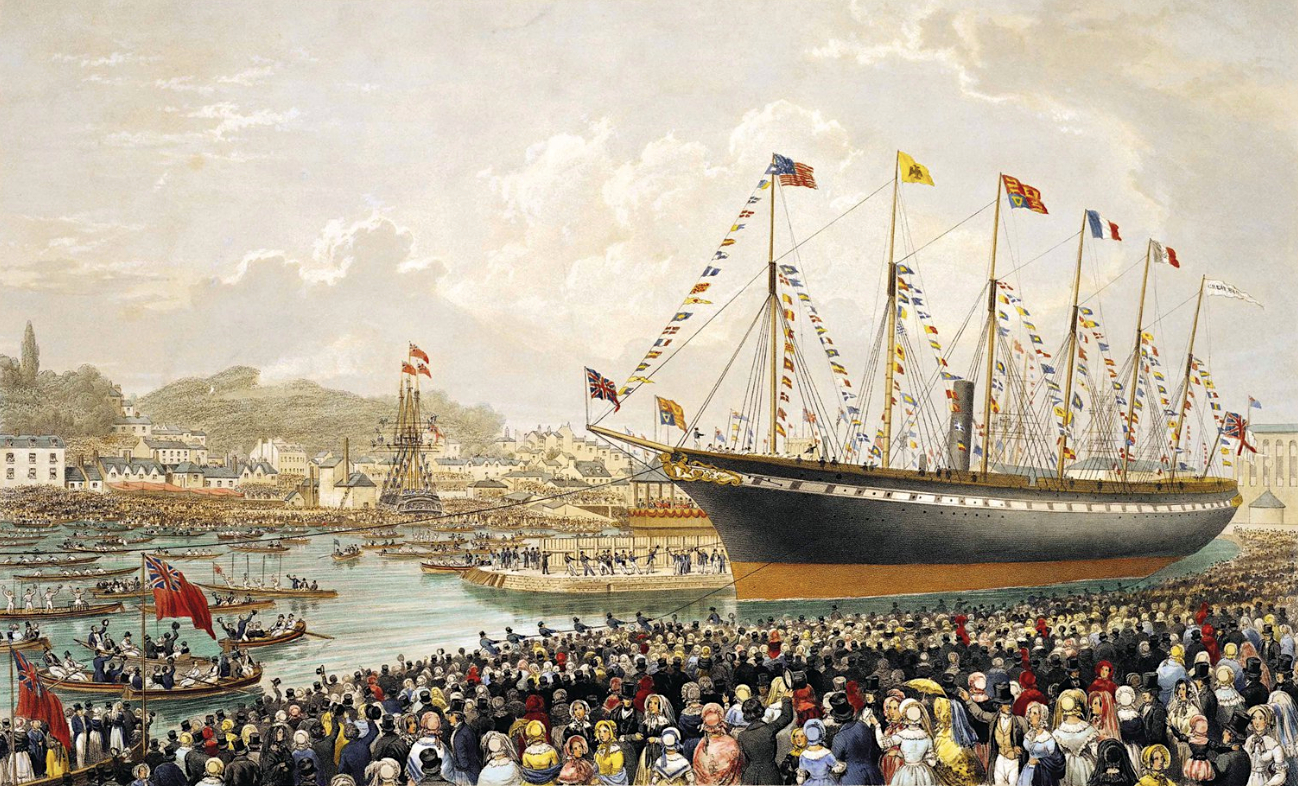The trireme was the most dreaded ship in ancient Greece because it was swift, nimble, and lethal. It would punch holes in the sides of rival ships or break their oars with its strong bronze rams, leaving them floating in the water. Herodotus describes how the clever deployment of triremes in combat contributed significantly to the ancient Greek fleet dominance in his histories.
Athenian shipyards could build around 300 triremes, the most renowned warships of antiquity, in the fifth century B.C. The trireme, whose name comes from the Greek trieres, which means “three rows of oars,” was the outcome of the continual advancement of naval technology in the Greek world. The epic poem Iliad, credited to Homer and written in the eighth century B.C., references ships with crews of 30 or 50 men, respectively, named triaconters and penteconters.
In reliefs from the seventh century B.C., biremes are depicted with two rows of oarsmen. The far more complex trireme type first developed around the beginning of the seventh century B.C. as a result of new technological advancements made possible by collected knowledge. Although modern historians believe triremes may have been first erected in Phoenicia, in the eastern Mediterranean and what is now Lebanon, Thucydides said that the Corinthians were the ones who first introduced the design to the Greek world.
1. PROTOTYPE
Triremes were regarded by the Greeks as living creatures, each possessing a sacred quality. The ships were given unique names because of this, and they were almost invariably feminine. The walkways sticking out from the prow served as their “ears,” the sails served as their “wings,” and their distinguishing eyes on either side of the prow were used to “find their way through the water.”
2. Captain and crew
Triremes were expensive to construct but were quicker and more stable than their predecessors. Costs of production were as high as having many talents (6,000 drachmas, or 58 pounds of silver). Even if a ship was damaged during combat, it could still be useful. Triremes might serve for 20 to 25 years with regular maintenance before being decommissioned or sold as “war surplus.” Several sailors who sailed for longer than 80 years have been documented throughout history.
Older ships were mostly utilized for transportation and surveillance, while the military was given exclusive use of the ships in the best condition. The Salamina and the Paralo were two highly regarded triremes from Athens. These flagships, which were renowned for their beauty, were frequently employed for diplomatic trips or rites, such as taking Athenians to the Olympic Games every four years.
Few slaves or outsiders made up the majority of the more than 50,000 oarsmen in the Attic fleet. The majority of them belonged to the class of thetes, which consisted of wage earners who could not afford to arm themselves as demanded of soldiers. The power of this social class over the aristocracy increased with the growth of the navy as a pillar of Athens democracy in the fifth century B.C. It is no accident that Greek thinkers like Euenus and Plato as well as Athenians started referring to their rulers as “helmsmen” who steered the “ship of state.”
3. STEERING THE SHIP
The cost of paying the employees was significant. The captain (trierarchos) paid the wages, which averaged one talent per month, out of his own pocket. The crew’s performance depended heavily on their ability to eat well. Salted fish, oatcakes, wine, cheese, vegetables, and around seven quarts of water per day made up the average diet.
An major event was the fleet’s departure, which was led by one or more naval commanders (strategoi). According to a contemporary simulation, the crew’s training allowed them to quickly move into position and confirm that the ship, their equipment, and weapons were in good operating order—within only 30 seconds. Before the captain prayed and sang a hymn to the gods, an animal sacrifice was performed under the direction of a priest. Then, as a libation, a cup of wine was spilled over the ship’s bow and stern.
4. THE OARSMEN
Under sail, the oarsmen obeyed the keleustés’ commands, which they received by yelling or mace-bashing a piece of wood. An aulos, a wind instrument akin to a double flute, signaled the rowing beat when the roar of the seas or conflict made it impossible for the rowing master to be heard. Traditional chants were added by the oarsmen to keep time.
Triremes tended to sail solely during the day because there was little place for stores or sleeping on board. The trireme was lifted out of the sea at night so that the crew could eat and relax while also protecting the hull from shipworms. The hull could also be examined for damage while on land.
5. Ramming speeds
The most terrifying tool in the trireme’s arsenal was a bronze battering ram that was fastened to the ship’s prow. Ancient ships engaged in fierce naval warfare by ramming into each other’s sides in an effort to disable their rowers or puncture their hulls, respectively. According to experts, the maximum ramming speed is approximately nine knots (10.4 miles an hour).
6. THE TRIREME, MASTER OF THE SEAS
Ramming an enemy ship and leaving immediately to let it sink was a common tactic. Captured oarsmen were permitted to switch sides if they surrendered (or if the attackers saved the survivors from drowning) (experienced oarsmen were very valuable assets). Each crew would be compelled to engage in fight in order to capture the intact ship if an assaulting ship rammed another ship and became trapped in its side, while the rammed ship would be abandoned.
In the early winter, dozens of triremes would return to Athens. As dolphins were thought to save sailors from drowning, if they swam off their bows, it was a good omen. At port, each trireme underwent maintenance and cleaning. While sailors and oarsmen received their pay, the trierarchs gave reports on their missions.
7. Reinvention and resurgence
Greece’s naval hegemony was short-lived, and the trireme changed. When Alexander the Great’s successors fought for supremacy in the late fourth and early third centuries B.C., modifications to the trireme as a concept were spearheaded by various Mediterranean nations and put to the test. Quadriremes and quinqueremes were being used by Romans and Carthaginians to battle at sea by the time of the First Punic War in the middle of the third century B.C.
The Romans were shocked to find an old trireme that had been abandoned at a shipyard for 70 years when they invaded Macedonia in 168 B.C. They viewed it as a relic, yet it was so exquisitely built that they continued to use it. The Battle of Lepanto off the coast of western Greece on October 7, 1571, took place more than 2,000 years after the triremes set sail for the first time in history. Almost half of the 67,000 Ottoman soldiers were killed when the Holy League alliance of Spain and many Italian city-states destroyed the Ottoman navy.




